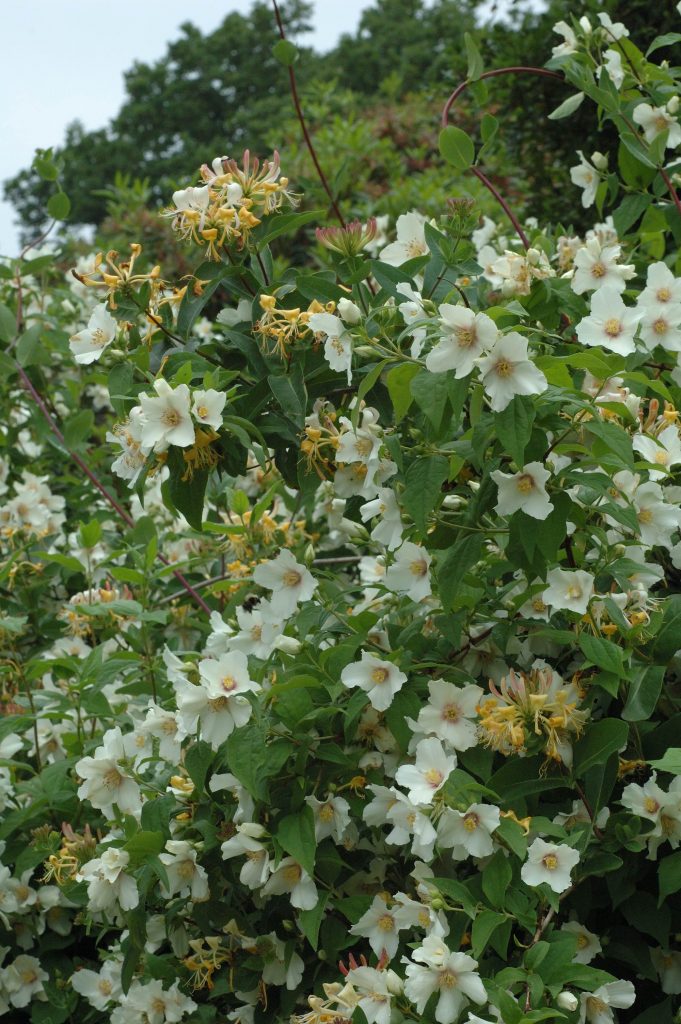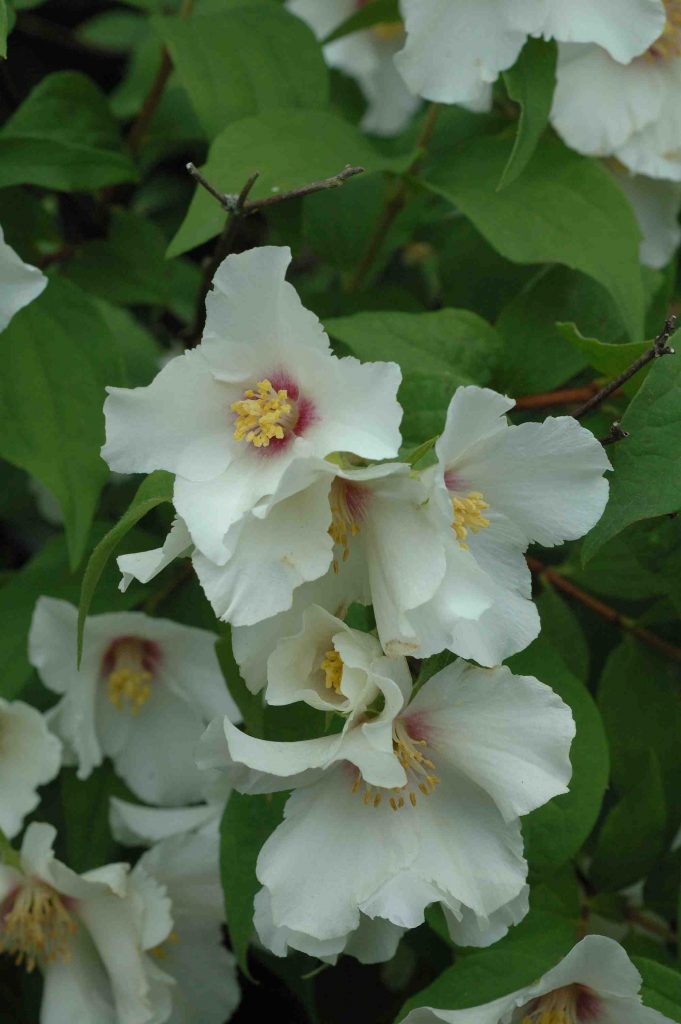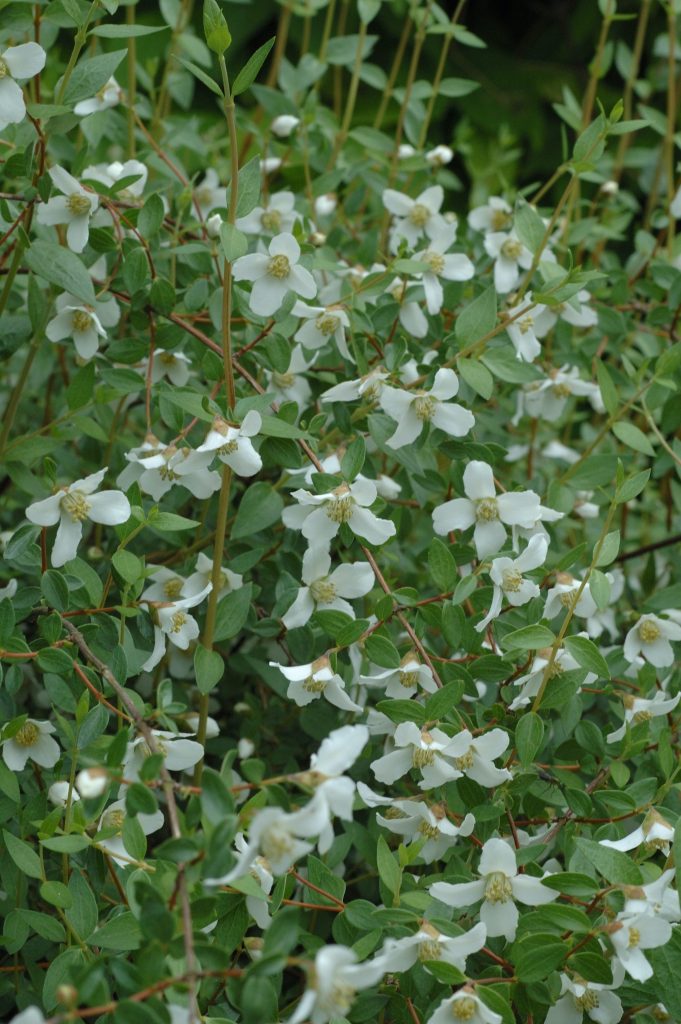
The days may be short and chilly but we can still dream about summer. And we can plan too. We are in the middle of the busy autumn planting season and this is the perfect time to plant trees and shrubs. There are many advantages to autumn planting:
The soil is still relatively warm and it is moist but possibly not sodden like it will be in January.
You will not have to water every day like you do when you plant in summer.
Garden centres are less busy so you can be sure of great advice – which you always get at Nags Hall of course!
Continuing my theme of essential and easy shrubs I think that every garden needs at least one philadelphus (mock orange). In sun or part shade these hardy shrubs are easy to grow. I won’t pretend that they are not without issues, especially pruning (which I deal with below), but for beauty and fragrance they are superb. Apart from a few that are variegated they are definitely one-hit-wonders, in bloom for two or three weeks in July, and then pleasant but nondescript. But that perfume! I love it.
Because they are easy to grow and are hardy, philadelphus are sold almost everywhere. ‘Virginal’ is easy to propagate and the most common but it is not the best so don’t buy one in the supermarket but get to the garden centre and buy something better. ‘Virginal’ has as profusion of double white flowers but it is a monster and philadelphus are difficult to keep small and retain flowers.

‘Belle Etoile’ is the standard variety and is distinguished by the purple flash in the centre of the flowers. It will reach about 2m high when mature. And it smells divine.
Half the size and just as delightful, ‘Manteau d’Hermine’ is my favourite for small gardens. It is rounded and bushy with pure white semi-double flowers.

Slightly difference in appearance and in fragrance, Philadelphus microphyllus, is a real gem. It has smaller leaves and flowers than usual and it likes a sunnier spot than most. It certainly should not be planted in shade but it associates well with lavenders, perovskia and phygelius in a sunny spot. The flowers may be smaller than usual but they are very fragrant with a distinct hint of pineapple. It is compact, about 1m high and easy to fit into most gardens.
Philadelphus pruning
The biggest problem with philadelphus is pruning. The flowers are carried on short shoots off growth that is two years old. This means that if you cut down or shear off shoots on a regular basis you will reduce flowers. Some varieties, especially the upright ‘Virginal’ produce strong upright stems and if you cut these back you will get few flowers. And the harder you prune, the stronger the new shoots will be. And these won’t flower for two years.
So it is never sensible to prune a philadelphus to try to keep it small.
But eventually old stems get heavy with the weight of side branches and get congested and sparse. So the way to treat them is to wait till flowering is over and then cut out a few of the oldest stems, at or near the base, and pull out these long growths. Then you can do a slight tidy up. Do this every year. If you clip over the plant and make it a neat ‘dumpling’ you will never get many flowers.
Jobs for the week
Keep brassicas tidy by removing yellow leaves and picking up fallen leaves which will encourage slugs.
Plant bare-root trees and shrubs
Collect fallen leaves and add to the compost heap to make leaf mould.
Cut back roses to remove the upper growth and prevent wind-rock in autumn gales
Continue to plant patio pots with winter and spring flowers.